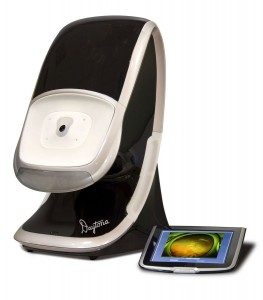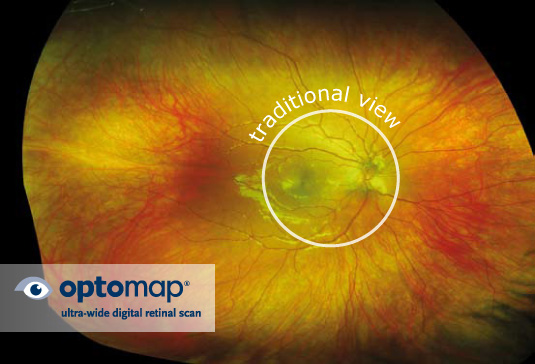Optomap Retinal Imaging
 Download a brochure for more information.
Download a brochure for more information.
We all want to protect our eyesight and overall health for ourselves and our family – that is why annual eye exams are important. Regular eye care and exams can protect and prevent many eye diseases, if detected early. Today, a whole range of eye problems can be treated successfully without total vision loss. In addition, many vision problems begin at an early age, so it’s important for children to receive proper eye care from the time they are infants.
While eye exams generally include a look at the front of the eye to evaluate health and prescription changes, a thorough screening of the retina is critical to verify that your eye is healthy. This can lead to early detection of common diseases, such as glaucoma, diabetes, macular degeneration, and even cancer. The exam is quick, painless, and may not require dilation drops.
The Optomap story: In 1990, 5 year old Leif Anderson went blind in one eye due to an undiagnosed retinal detachment. He was getting regular eye exams, but conventional tests available at the time made a thorough examination difficult. Distressed by the diagnostic methods available, Leif’s father, Douglas, designed the Optomap retinal exam.
Optos’ patented ultra-widefield digital laser scanning technology acquires images that support the detection, diagnosis, analysis, documentation, and management of ocular pathology and systemic disease that may first present in the periphery of the retina (back of eye). These conditions may otherwise go undetected using traditional examination techniques and equipment. Simultaneous, non-contact, central pole-to-periphery views of up to 82% or 200 degrees of the retina (back of eye) are displayed in one single capture, compared to 45 degrees achieved with conventional methods.
Read more about the Benefits of Optomap
Download Optomaps form [PDF]

